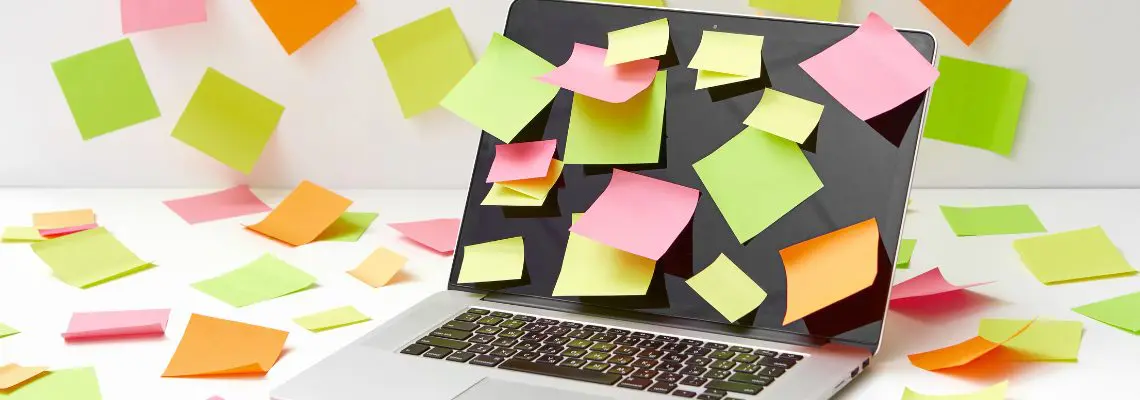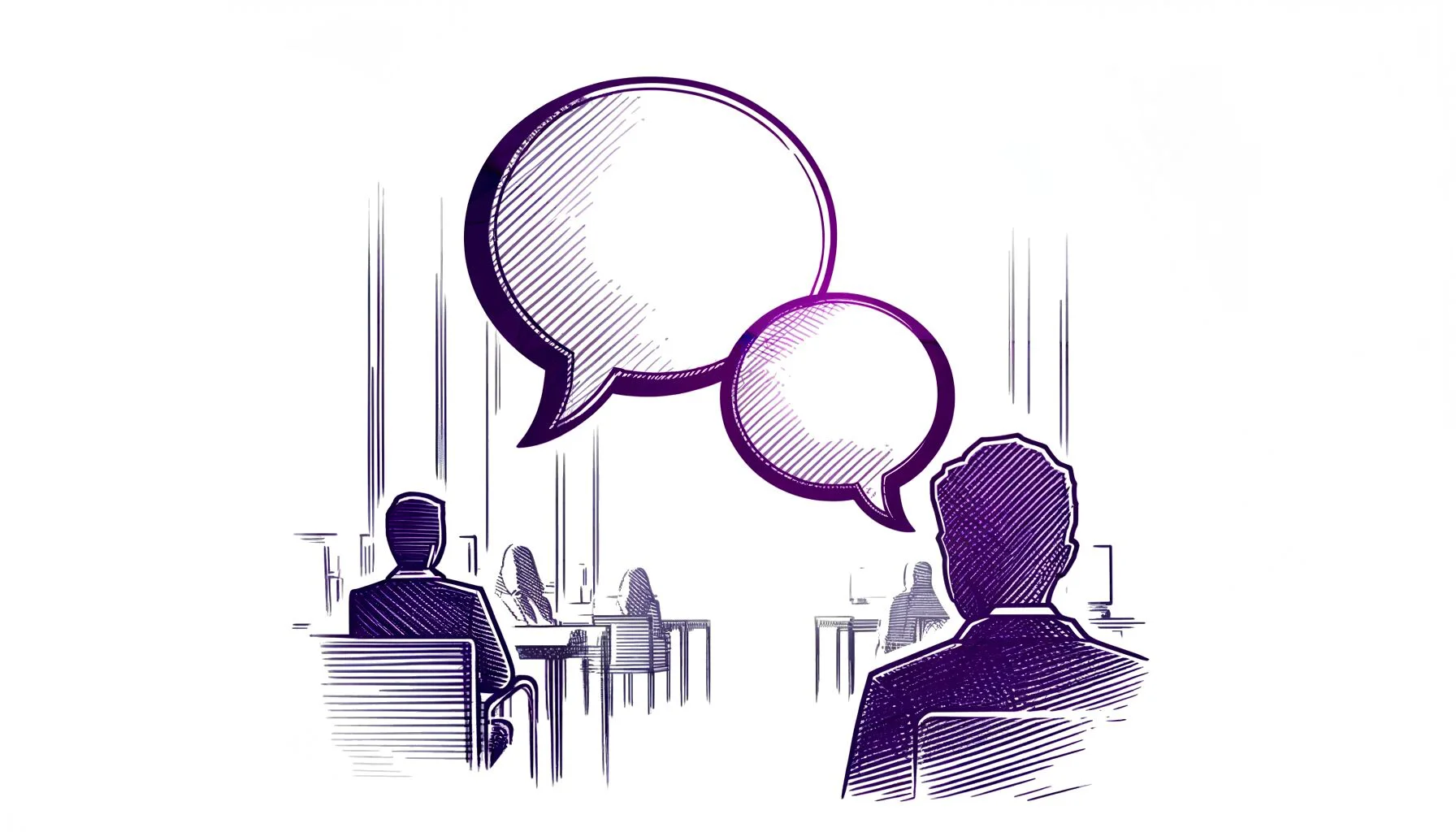
Productivity software for personal use is a topic of increasing interest and influence. For many, productivity apps are an everyday component in life both for work and leisure. The trend arguably gained attention and relevance around 2010 and the developments from corporate project management systems to apps for individual task management models grew.
Personal productivity software is classified separately from the rest, with note-taking apps for personal productivity as a frontrunner. If you’re a bit of a scatterbrain or information-hoarder like me, you have probably tried several standard note-taking apps. With a varying feature set that includes design and formatting elements, collaboration options, and multi-functional usage, digital note-taking apps have become a vital part of the toolkit, alongside project management systems (psst… Zenkit!) and chat apps.

On the lookout for a note-taking app that definitely follows the “work smarter, not harder” vibe and will help you level up in your workflow? Check out these 10 note-taking apps reshaping the future of note-taking.
What Is Note-Taking?
I’m sure we’ve all used the term with little thought to what note-taking actually is. Most likely, our note-taking consists of to-do lists or inspirational quotes quickly jotted down.
The skill of taking notes for research paper writing is another technique entirely, and many of us probably have gotten into the habit of using the notes section in our Google Calendar as a digital replacement for sticky notes. Sure, this may be a form of note-taking, but more often than not, it is an activity and practice wherein we waste a lot of time.

So how can we properly define what note-taking is? In short, note-taking is the practice of recording information from different sources and platforms. When writing academic papers, note-taking is the process of obtaining and compiling information that answers and supports the questions and topic of the paper. Notes can be in one of three forms: summary, paraphrase, or direct quotation.
Note Apps: Is There a Difference?
From pen and paper to digital and multifaceted tools, note apps have come a long way. With user requirements becoming more complex, features such as intuitive autotype, organization, and collaboration requirements have become the standard. Apps with further technological integrations are taking the spotlight.

Note: Just because a note app includes more features, doesn’t make the app better than the rest. The aim of any productivity software is to assist you in your personal workflow.
That being said, note apps incorporating technological advances and built on intricate systems offer users a sweet upgrade. Equivalent to recent Apple features such as AirPlay or SharePlay, note apps with bi-directional linking and knowledge management systems just sweeten the user experience, whether the feature was a necessity (to you) or not.
What Defines Next-Level Note Apps?
Saying ‘Goodbye’ to the classic, beloved apps such as Evernote or OneNote may not be your cup of tea nor of necessary importance for the way you incorporate note apps into your workflow.

Productivity geeks and avid digital note app users likely remember when Notion gained relevance as an “all-purpose tool”. The combination of notes, calendar synchronization, and flexibility in stylization offered users requiring such features an upgrade. However, these note apps aren’t the perfect fit for content creators or users who do lots of ‘knowledge work’.
Organization is (certainly) key when working with any relational database. The appeal of personal knowledge management systems expanded, leading to the development of note apps that enable users to shape the knowledge and information they store through a “tree of ideas” or a networked thought.
The note apps (re)shaping the future of taking notes for next-level working promote and manage knowledge as single defining ideas as well as connecting distinct observations into a web of knowledge. Inspired by the intricacy of the human brain, these apps replicate the practice of such a patchwork thought process.
List of Apps

Without further ado, let me introduce the 10 note-taking apps reshaping the future of note-taking:
1. Hypernotes
Hypernotes is a knowledge management system created to be the new knowledge database. With features such as bi-directional linking, semantic graphs, as well as HTML and markdown, users can easily create a web of knowledge. Hypernotes takes care of organizing so users can stop taking notes and start creating knowledge, with automated connections easing the workflow.
2. Notion
Although classified as a note app, Notion is more versatile. Notion is basically three tools in one: a powerful note app (which is why it’s on this list), a task and project manager, and a reference wiki. Users use Notion for various use cases such as FAQs, data analytics of marketing costs, calendar tracking, and, last but not least, taking notes – all in just one platform.
3. Roam Research
Roam Research is a note-taking app for networked thought, creating groups of information and making knowledge associations naturally. Arguably, the comprehensive app made bi-directional linking popular for note-taking apps. Roam Research enables users an organized and personalized overview of all the notes taken. Known for their high user satisfaction, users new to these kinds of note-taking apps need to consider the pricing options as there is no free version.
4. Obsidian
Obsidian is a home-grown note app supporting every common form of Markdown. The app is a developer’s dream fulfilled as Obsidian enables visual presentation between notes with backlinks, graph views, and cross-referencing. Security and data privacy are important factors that Obsidian takes care of by running all of the data, whether coming in or out of the app, through an encryption process. Safe to say, Obsidian is systematized, intuitive, as well as secure.
5. RemNote
What began as a research project at MIT developed into the software RemNote, a thinking and learning workspace to assist students in knowledge management. RemNote is a non-linear app enabling knowledge sharing. Particular useful features such as flashcards, references, and backlinks assist users in the practice and process of knowledge retention. Users who prefer revising or studying with paper versions or using Word.doc can import and export notes directly from Markdown and other approved apps.
6. Bear
Bear is a breath of fresh air when it comes to note apps. Initially designed with prose in mind, Bear places a strong focus on typography. Organizing with Bear is done through the use of hashtags. Child tags can simply be created with the use of a slash ( / ). A clear favorite for programmers, Bear features syntax highlighting for over 20 programming and markup languages.
7. Zettlr
Zettlr is simply an open-source Markdown editor. The system authorizes various citation formats, includes theme customization and writing statistics, as well as supporting the Zettelkasten method. File and tag management permits user-friendly note organization. Noteworthy of Mem is that the app is available in 14 languages and notes can be exported in 40 different formats.
8. mem.ai
Mem is a note-taking app focusing on simplicity, quickness, and collaboration. The app allows users to capture, connect, and share information easily. It combines features such as lightning-fast capture, always-on search, and seamless collaboration. Powered by a collaborative graph database, Mem enables diverse organization formats. Sadly, bi-directional linking is currently not supported and users interested in testing Mem currently require patience due to a waiting list for the app.
9. Logseq
The privacy-first, open-source knowledge base allows users to visualize every note through graphs. Knowledge grows and new ideas and thoughts are connected into a “tree of ideas”. With Logseq users can organize tasks and projects with built-in workflow commands.
10. Amplenote
Amplenote is an encrypted note-taking app. Notes can be labelled as tasks, scheduled in calendar view, and inspected in a daily log. Extensive embedding options include rich footnotes, screenshots, YouTube videos, Google Sheets, as well as hyperlinked note sections. Amplenote uses the Eisenhower Matrix, sometimes called the “Covey Matrix” to generate a “task score” that clarifies which tasks would be best to focus on.
Why All the Buzz?
In order for even the casual user to befriend the structure and best understand the concept of these next-level note-taking apps, it’s integral to be familiar with the technical terminology. Let’s clear up the confusion on the most common buzzwords describing the systems.
What Is a Knowledge Management System?
A knowledge management system is simply a system that enables you to manage your knowledge. It’s most often used in business environments and used to refer to a multidisciplinary approach to achieving organisational objectives. Knowledge management (KM) is the process of creating, sharing, using and managing the knowledge and information of an organization (Wiki).
What Is Bi-Directional linking?
By definition, bidirectional is “involving, moving, or taking place in two usually opposite directions” (Miriam Webster). Bi-directional linking, therefore, is the connecting of associated content with one another. In practice, if an association or repetition of a particular topic or terminology is stored in a knowledgement management system, a bi-directional link will be generated by the system to both locations.
What Is the Zettelkasten Method?
The Zettelkasten method is a personal strategic process for thinking and writing. Invented by Niklas Luhmann, the method encourages you to connect the dots between different trains of thought and knowledge. The method could be described as the analogue version of bi-directional linking, although the Zettelkasten method is essentially the forerunner of the latter.
Deemed one of the most effective knowledge management methods, the Zettelkasten method is an organization system that helps you organize your knowledge while working. The method is versatile and suitable for digital nomads as well as paper and pen enthusiasts.
Interested in testing or implementing the method with your workflow? Check out A Beginner’s Guide to the Zettelkasten Method for further reading.
Images from Vlada Karpovich and Giphy.
Final Thoughts
I’m personally blown away at the rapid development of note-taking apps and try to keep up-to-date with the latest technological advances. Incorporating new systems takes time and there’s certainly a lot of trial and error in the process. Nevertheless, it’s exciting to have a front-row seat to experience as well as watch how productivity software grows into home-based systems for the ordinary user.
We’d love to know what you think about the direction note-taking apps are headed. Have you tested or used a particular note app, adamant it’s better than the rest? Write us your thoughts and share your use cases with us in the comments!
Cheers,
Jessica and the Zenkit Team





Leave a Reply